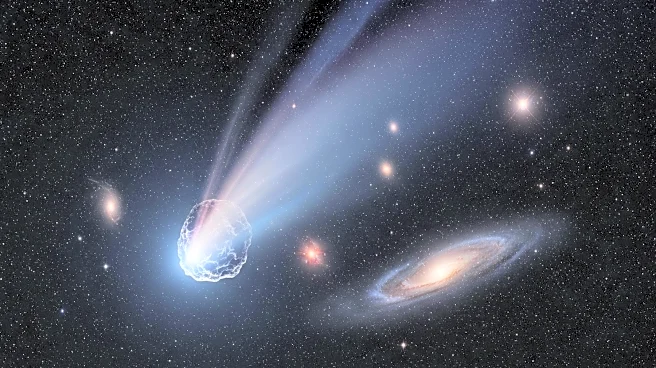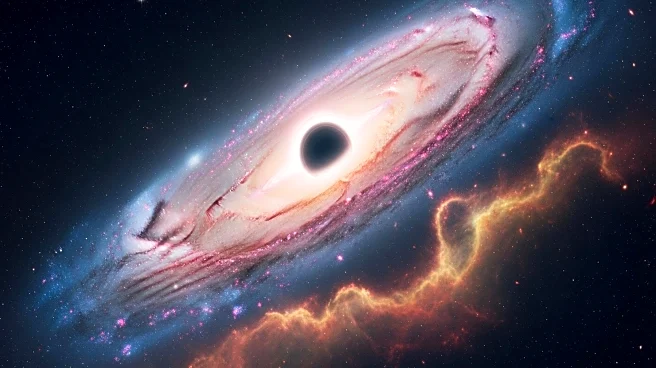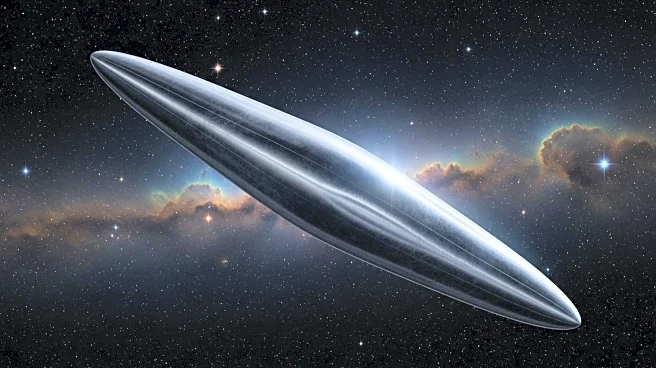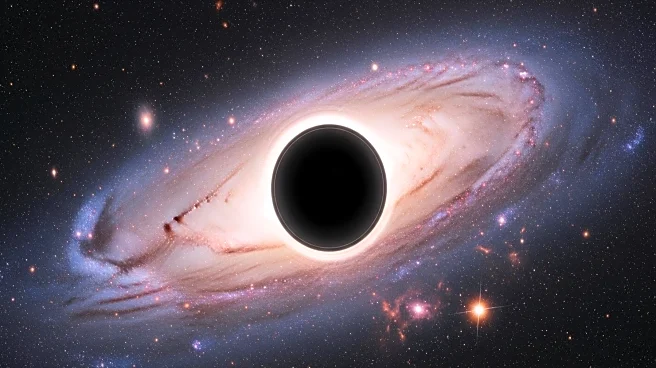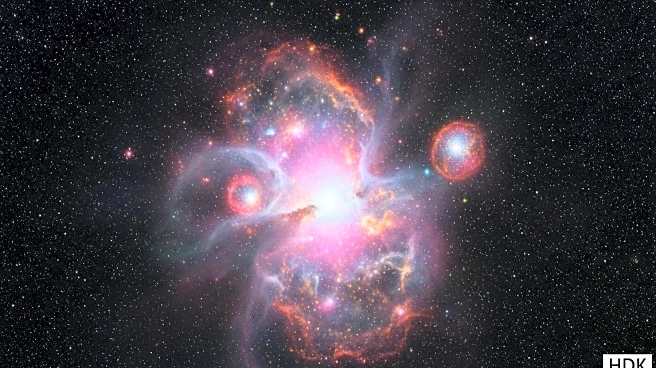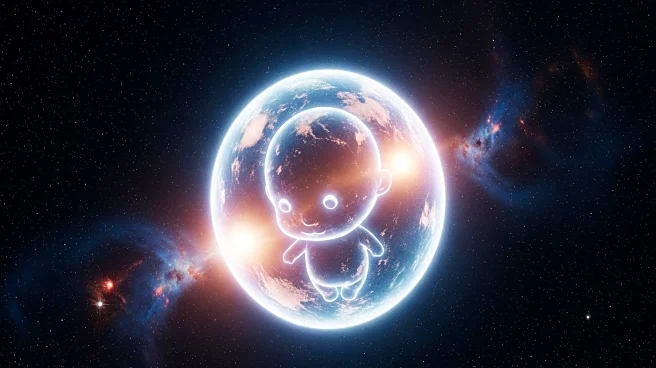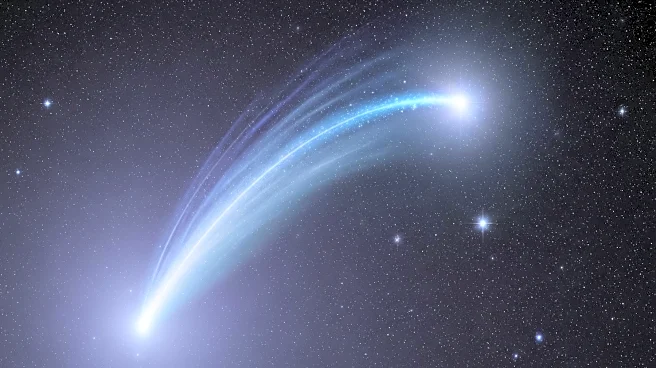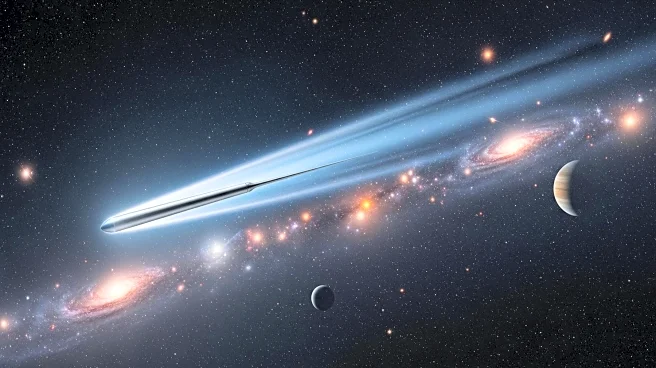What's Happening?
Astronomers have observed a protoplanet, AB Aurigae b, actively forming around its young star, providing a rare glimpse into the chaotic processes of planetary formation. Located 93 astronomical units from its star, AB Aurigae b is about four times the mass of Jupiter. Using the Very Large Telescope's MUSE spectrograph in Chile, researchers detected hydrogen alpha emission lines, indicating the planet is accreting material from its surrounding protoplanetary disk. This discovery marks the first time a protoplanet has shown clear evidence of ongoing mass accretion, challenging standard models of planet formation. The planet's location suggests it formed through a rapid collapse of dense disk regions rather than the core accretion method typical for planets like Jupiter and Saturn.
Why It's Important?
The discovery of AB Aurigae b offers crucial insights into the formation of gas giant planets, a process that remains largely mysterious. Observing a protoplanet actively accreting material provides direct evidence of how these massive celestial bodies grow during their early stages. This challenges existing theories, particularly the core accretion model, and suggests alternative formation processes may be at play. Understanding these mechanisms is vital for comprehending the diversity of planetary systems and the conditions that lead to planet formation. The findings could influence future research and models, potentially reshaping our understanding of planetary development across the universe.
What's Next?
Future observations of AB Aurigae b will aim to determine the proportion of detected emissions originating from the planet itself versus reprocessed light from the surrounding disk. Researchers will also investigate whether similar accretion signatures can be found around other young stars, which could further challenge or refine current planet formation theories. These studies will enhance our understanding of the early stages of planetary development and may lead to new insights into the formation of other celestial bodies.
Beyond the Headlines
The detection of AB Aurigae b's accretion process highlights the complexity and variability of planetary formation, suggesting that different mechanisms may operate under varying conditions. This discovery could prompt a reevaluation of the factors influencing planet formation, including the role of circumplanetary disks and the gravitational dynamics within protoplanetary environments. The findings may also have implications for the search for exoplanets, as understanding formation processes can aid in identifying potential habitable worlds.


